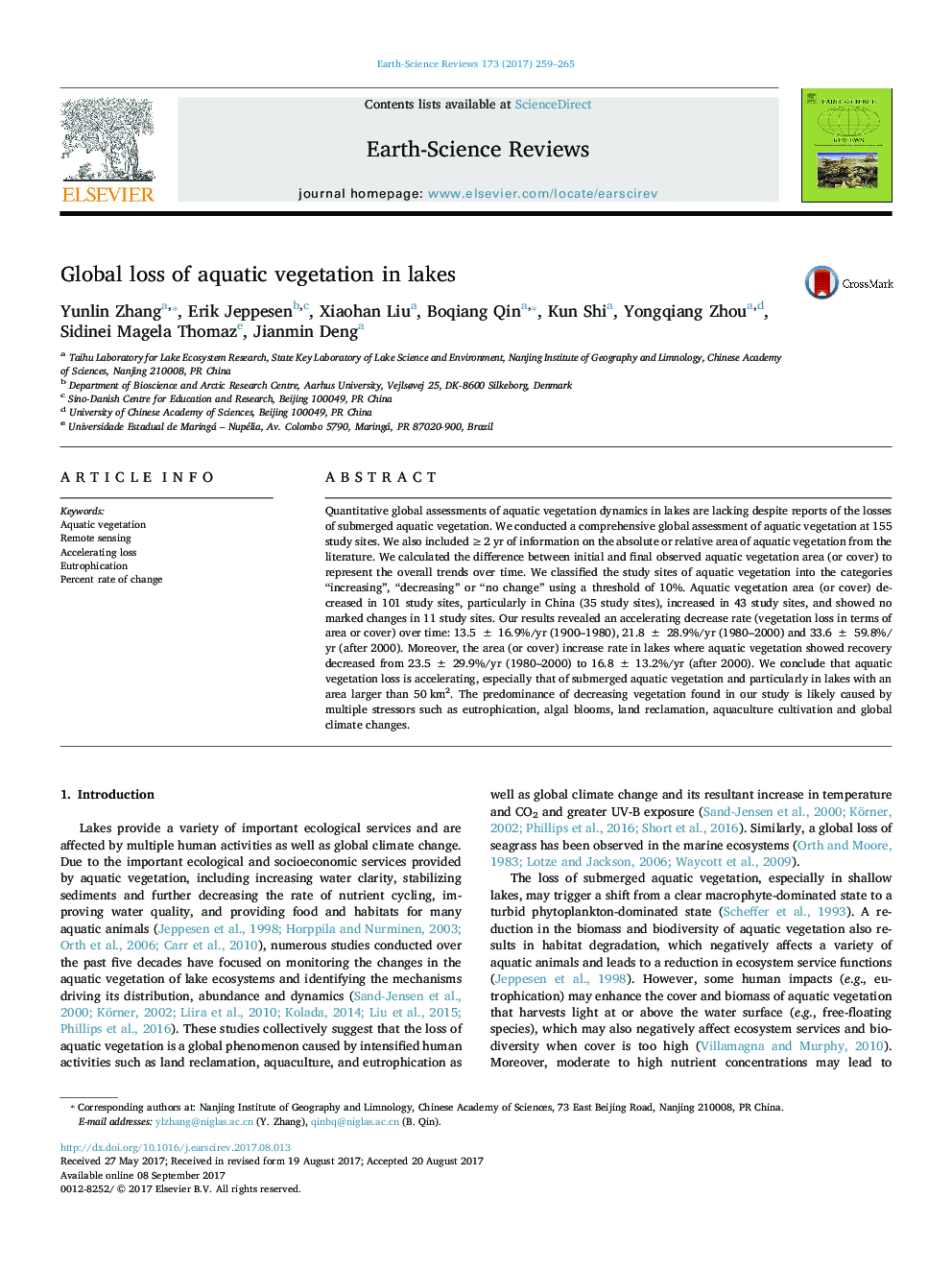| Article ID | Journal | Published Year | Pages | File Type |
|---|---|---|---|---|
| 5785060 | Earth-Science Reviews | 2017 | 7 Pages |
Quantitative global assessments of aquatic vegetation dynamics in lakes are lacking despite reports of the losses of submerged aquatic vegetation. We conducted a comprehensive global assessment of aquatic vegetation at 155 study sites. We also included â¥Â 2 yr of information on the absolute or relative area of aquatic vegetation from the literature. We calculated the difference between initial and final observed aquatic vegetation area (or cover) to represent the overall trends over time. We classified the study sites of aquatic vegetation into the categories “increasing”, “decreasing” or “no change” using a threshold of 10%. Aquatic vegetation area (or cover) decreased in 101 study sites, particularly in China (35 study sites), increased in 43 study sites, and showed no marked changes in 11 study sites. Our results revealed an accelerating decrease rate (vegetation loss in terms of area or cover) over time: 13.5 ± 16.9%/yr (1900-1980), 21.8 ± 28.9%/yr (1980-2000) and 33.6 ± 59.8%/yr (after 2000). Moreover, the area (or cover) increase rate in lakes where aquatic vegetation showed recovery decreased from 23.5 ± 29.9%/yr (1980-2000) to 16.8 ± 13.2%/yr (after 2000). We conclude that aquatic vegetation loss is accelerating, especially that of submerged aquatic vegetation and particularly in lakes with an area larger than 50 km2. The predominance of decreasing vegetation found in our study is likely caused by multiple stressors such as eutrophication, algal blooms, land reclamation, aquaculture cultivation and global climate changes.
Graphical abstractDownload high-res image (228KB)Download full-size image
